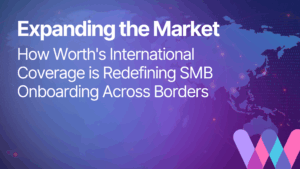Most people think of Independent Sales Organizations, or ISOs, as pure sales engines. ISOs help merchants access the payment systems they need by connecting them to sponsor banks and simplifying the onboarding experience.
At a high level, the ISO model has not changed much. Typically, they focus on selling and referring merchants while leaving the risk to someone else.
But that model is shifting.
More ISOs are exploring what it means to own risk themselves. Some are considering moving from retail ISO to wholesale ISO status. Others are looking into becoming Payment Facilitators (Payfacs) or Financial Service Providers (FSPs). All of these paths introduce new responsibilities, especially when it comes to underwriting and approving merchants quickly.
Risk ownership is becoming a competitive advantage. The ISOs that can approve merchants faster, reduce errors, and deliver a modern onboarding experience are the ones that win clients. The market rewards speed and accuracy, and ISOs who lean into risk ownership can take more control of both.
Retail ISOs vs Wholesale ISOs: What’s the Difference?
Not all ISOs operate the same way. The biggest distinction: Does the ISO own any of the underwriting risk?
Most do not.
These are Retail ISOs. A retail ISO focuses on selling payment solutions and acquiring merchants for a sponsor bank, Payfac, or FSP partner. The sponsor bank or processor performs all underwriting and holds all financial liability. Retail ISOs are sales engines. They thrive on relationships, speed to outreach, and ease of onboarding, but they are not responsible for risk.
Wholesale ISOs operate differently. They receive delegated underwriting authority from their sponsor bank, which means they can review merchants, evaluate risk, and approve accounts within defined parameters. The upside is stronger margins and more control of the merchant experience. But that also means the wholesale ISO absorbs the financial hit if an underwriting mistake leads to losses.
Because of this structure, wholesale ISOs need to move fast. They take on more responsibility, so they need onboarding workflows that eliminate errors and keep merchants flowing in. A single delay or mistake can directly impact the ISO’s revenue and risk profile.
So why are there far more retail ISOs than wholesale ISOs?
It’s largely because owning risk requires more operational maturity and better technology. But that’s why we’re seeing more ISOs exploring the shift, not just to be a wholesale ISO, but even to acquire the proper licenses to be a Financial Service Provider or a Payment Facilitator. Owning the risk means greater control, greater margin, and greater ability to shape the merchant journey.
The Core Problem: Risk Ownership Without the Right Workflow
Once an ISO takes on any level of risk, the entire onboarding experience becomes mission-critical. Underwriting is no longer a back-office task. It becomes the determining factor as to whether you win or lose the merchant.
Traditional processes make onboarding hard. Many ISOs still rely on digitised versions of old paper applications. These workflows force merchants to enter long strings of business information by hand.
But what happens when EIN numbers get mistyped?
What happens when addresses are entered incorrectly?
What happens when documents are uploaded in the wrong format?
Every step introduces friction, and that friction leads to application abandonment. When a merchant is shopping for a payment solution, they expect immediate action. If you don’t respond in a day, they’re likely to move on. And once they move on, you’ve lost the merchant.
Why do they move on so quickly?
These merchants are small and medium-sized businesses that have dozens of priorities competing for their attention. If an ISO doesn’t process their application quickly, there’s a chance they won’t respond to follow-up emails and calls for weeks.
ISOs who want to own risk need the right infrastructure. They need an onboarding experience that is fast, accurate, and simple enough for merchants to complete without friction. Automation and clean workflows are par for the course. Without a strong operational foundation, risk ownership becomes a liability instead of a competitive advantage.
Why ISOs Are Pursuing Payfac and FSP Status
A Payfac, or Payment Facilitator, is a business model. Payfacs operate the entire merchant onboarding and underwriting workflow. They approve sub-merchants under their own umbrella, manage risk decisions, and control the full lifecycle from application to activation. This level of ownership creates a stronger, more seamless experience for merchants and allows the Payfac to capture more revenue from each relationship.
An FSP, or Financial Service Provider, is a licensing or regulatory status. It grants the permission needed to operate in highly regulated environments. An FSP can choose to function like a Payfac, but not every FSP does. In practice, many Payfacs pursue FSP status as they scale, but the terms describe different parts of the operating model.
Across the industry, more ISOs are exploring what it means to become either a Payfac or FSP. Both paths give ISOs more control of underwriting and the customer experience. ISOs who rely on slow, legacy processes fall behind. Owning more of the risk gives an ISO the ability to move faster, differentiate their service, and keep merchants engaged from first contact to final approval.
Owning Risk Requires Modern Automation
The moment an ISO takes on even a portion of underwriting responsibility, the demands on its operation change overnight. Risk ownership is not just about making sound decisions. It is about making those decisions quickly, consistently, and with accurate data.
Underwriting requires clean inputs. You need correct business information, validated EINs, accurate ownership details, and compliant documentation. When a merchant types information into a PDF or a digitized paper form, that accuracy breaks down. A wrong digit in an EIN, an old address, or a missing document can derail the review.
Modern automation solves these issues by creating a clean data layer that flows directly into underwriting. Fast, automated workflows prevent abandonment, support stronger underwriting decisions, and give ISOs the confidence to own more of the risk.
How Worth Helps ISOs Transition Into Risk Ownership
When an ISO begins owning risk, the biggest hurdle is building a fast, accurate, and scalable underwriting process. Worth gives ISOs that foundation without requiring them to rebuild their operations.
Instead of PDFs or DocuSign packets, merchants complete a guided onboarding flow in minutes. Worth Pre-Fill retrieves information automatically where possible, and fields are validated in real time. This eliminates common errors, such as incorrect EINs, and reduces the back-and-forth that causes merchant drop-off.
For ISOs already owning risk, Worth improves speed and lowers abandonment. For ISOs exploring Payfac or FSP models, it provides a plug-and-play workflow that makes the transition manageable.
Risk Ownership Is Becoming the New Advantage for ISOs
The ISO market is changing. Retail ISOs have traditionally focused on selling and referring merchants, leaving underwriting and risk management to sponsor banks or processors. But as competition increases and merchant expectations rise, more ISOs are looking to move upstream. They want better margins, more control of the customer experience, and the ability to approve merchants at the speed the market now demands.
Owning risk creates those opportunities, but it also creates new challenges. Underwriting becomes a time-sensitive, high-stakes process where delays and errors directly impact revenue.
This is why an onboarding and underwriting workflow automation platform is so essential.
As the industry shifts, ISOs that adopt modern tools like the Worth platform will close merchants faster, reduce abandonment, and accelerate revenue.
Want to see the platform in action? Schedule a demo with one of our team members.
Related posts
Access additional resources and insights to support your goals and drive success.
Strengthening Our Foundation for Scale: Worth Expands Its Leadership Team
Worth has always been laser-focused on building the most reliable, intelligent platform for onboarding and underwriting in financial services. As…
How Agentic AI Is Transforming Underwriting in Fintech: What You Need to Know
If 2023 was the year of chatbots, 2025 is shaping up to be the year of Agentic AI. But what…
Expanding the Market: How Worth’s International Coverage is Redefining SMB Onboarding Across Borders
Commerce no longer stops at the border, and neither should onboarding. The World Bank estimates there are over 400 million…




